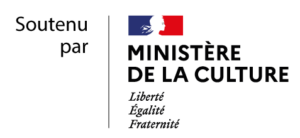Call for papers for a themed session at the biennial conference of the Music and Philosophy Research Group at King’s College London, 13-14 July 2017.
MPSG 2017 Themed Session: Feeling in Music and Sound: Atmosphere, Stimmung, Mood
Convener: Friedlind Riedel (Bauhaus University Weimar)
→
Please send abstracts of no more than 300 words to Friedlind Riedel by 15 October 2016
Whether sung or sampled, private or alien, composed, amplified, passed down, recorded or imagined, music and sound are operative forces for shaping feelings. It seems that wherever music resounds, feelings or moods are likely to unfold as perhaps vague, but nonetheless intrusive and pervasive atmospheres. A recurrent radio-tune, a symphony, a jarring sound, a call for prayer, a soundtrack, a marching band or the hoot of an owl may all evoke, embody, radiate, alter, narrate, intensify, subvert or diffuse a situational atmosphere or Stimmung. In turn, the phenomenal spheres of music and sound have been key to the various philosophical genealogies of Stimmung, mood, or atmosphere theories. In this vein, German phenomenologist Hermann Schmitz (1978, 2014) invokes music as evidence for his redefinition of feelings as atmospheres; Gernot Böhme (1995) mobilises the musical instrument as a prime example of his New Aesthetics of atmosphere; and Timothy Morton (2007) turns to timbre and tone to elaborate what he terms “ambient poetics”.
Despite these fertile intersections of music and atmosphere, music scholarship has often referred to phenomena of atmosphere or collective mood only in passing. This contrasts with contemporary sound studies, in which notions of atmosphere along with ambience and affect have gained currency to investigate music and sound as phenomena of space and place. This panel thus invites papers that advance and challenge existing concepts of atmosphere, Stimmung or mood through music and sound. We welcome in particular contributions that go beyond a notion of atmosphere, Stimmung or mood as spatial intensity, and that widen the focus to include performance, process, duration, dynamism, tension, timbre, resonance, or rhythm. Furthermore, this panel seeks to foster dialogue between the burgeoning anglophone scholarship on atmosphere as grounded in affect theory and germanophone notions of atmosphere that bear on New Phenomenology. Topics of interest might include, but are not limited to:
- Music and collective feelings
- Musical movement and feelings of being moved
- Stimmung, mood, atmosphere – conceptual continuities and differences
- Methodological implications of music as atmosphere, mood or Stimmung
- Modalities of listening in atmospheres
- Atmosphere and the musical furnishing of (religious) rituals
- Schmitz’ Atmosphere and Heidegger’s Stimmung
- Vagueness of atmosphere and the notion of the musical ineffable
- Music as affective force
- Diffuse meaningfulness versus musical meaning
- Timbre and tone
- Atmosphere theories as New-/Post-Phenomenology
- Music and/as environment
- Music, imagination, and felt presence
- Ontologies of music in relation to atmosphere
- Moods and modes
- Convener: Friedlind Riedel (Bauhaus University Weimar)
Indicative Bibliography
The below brief bibliography comprises a selection of works that may be of particular relevance to those with an interest in this topic, or to those seeking to orient themselves therein, but is intended to be neither exhaustive nor prescriptive; there is no obligation to cite any particular work or works, either in abstract submissions or in final papers.
Bille, Mikkel, Peter Bjerregaard, and Tim F. Sørensen. 2015. “Staging Atmospheres: Materiality, Culture, and the Texture of the In-Between.” Emotion, Space and Society 15:31–38.
Böhme, Gernot. 1993. “Atmosphere as the Fundamental Concept of a New Aesthetics.” Thesis Eleven 36 (1): 113–26.
Griffero, Tonino. 2014. Atmospheres: Aesthetics of Emotional Spaces. Farnham: Ashgate.
Gumbrecht, Hans U. 2012. Atmosphere, Mood, Stimmung: On a Hidden Potential of Literature. Stanford: Stanford University Press.
Jankelevich, Vladimir. 2003. Music and the Ineffable. Transl. by Carolyn Abbate. Princeton: Princeton University Press. (Orig. Publication La Musique et l’Ineffable, 1961).
McGraw, Andrew. 2016. “Atmosphere as a Concept for Ethnomusicology: Comparing the Gamelatron and Gamelan.” Ethnomusicology 60 (1).
Riedel, Friedlind. 2015. “Music as Atmosphere.” Lebenswelt 6: 80–111.
Schmitz, Hermann. 2014. Atmosphären. Freiburg: Aber.
Vadén, Tere, and Juha Torvinen. 2014. “Musical Meaning in Between: Ineffability, Atmosphere and Asubjectivity in Musical Experience.” j aesthet phenomenol 1 (2): 209–30.



